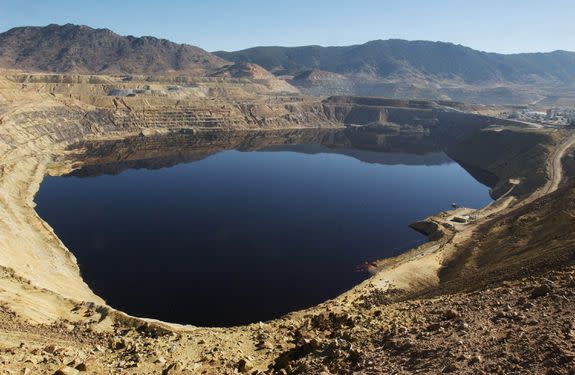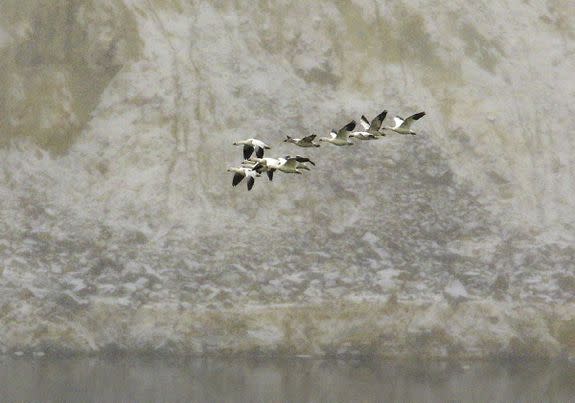Thousands of snow geese were killed after landing in a toxic lake

When a snowstorm hit Montana last week, tens of thousands of southbound snow geese were forced to land in the nearest source of open water. It just so happened that source was a toxic pit from an old copper mine.
Several thousand geese died soon after settling in the pit, which holds about 45 billion gallons of highly acidic water, according to Montana Resources, one of the mining companies responsible for the Berkeley Pit Superfund site.
SEE ALSO: Seabirds may eat so much marine plastic because of its scent
Witnesses described the scene on Nov. 28 as "700 acres of white birds," Mark Thompson, the environmental affairs manager for Montana Resources, told the Associated Press.
"I can't underscore enough how many birds were in the Butte area that night," Thompson told the AP. "Numbers beyond anything we've ever experienced in our 21 years of monitoring by several orders of magnitude."

Image: WALTER HINICK /THE MONTANA STANDARD VIA AP
The mine estimated that as many as 10,000 snow geese landed on the pit's contaminated water that night. Butte typically only sees between 2,000 and 5,000 birds all year during the spring and winter migrations combined.
The snowstorm likely wasn't the only reason for the unusually large flock of geese passing over Butte. Climate change may have also played a role, environmental experts in Montana said.
With Montana experiencing milder winters in recent years, many birds are migrating later than they usually do, Steve Hoffman, executive director of the Montana Audubon Society, told the Montana Standard.
Snow geese typically start migrating in the first two weeks of November. But when they wait to fly south, it means "some are staying in places where they've never stayed the winter before," Jack Kirkley, an ornithologist and professor at the University of Montana-Western, told the Montana newspaper.

Image: Walter Hinick /The Montana Standard via AP
Thompson of Montana Resources said the geese's death toll could've been much higher if not for efforts to scare birds away from the pit.
Employees of Montana Resources and the Atlantic Richfield Co. (Arco), which also manages the site, reportedly worked around the clock using spotlights, noise makers and other tools to scare the birds away from the toxic pit. About 90 percent of the snow geese had fled by the next morning.
Montana Resources and Arco estimated that several thousand birds had died based on drone and aircraft flights over the pit. That's significantly more than the 342 birds that died in the toxic water in 1995. The earlier deaths prompted environmental efforts to keep birds from the pit.
The companies won't release the final death toll until federal and state agencies can confirm the number, the AP said.
Associated Press contributed reporting to this story.
